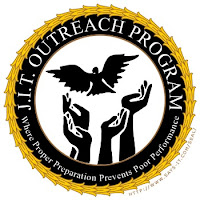Headline
After rising most years since 1999, the number of young adults ages 18-29 in prison or jail fell by 11% between 2008 & 2009, to reach 778,200. (See Figure 1)
 |
| Figure 1: Number of Young Adults in Prison or Jail, '99-2009 |
Importance
Two important issues associated with youth imprisonment are the disproportionate representation of minorities, & recidivism. Of particular concern are high rates of imprisonment among young, disadvantaged minority men. According to one estimate, on a typical day in 2000 approximately 1 in 3 young, black, male high school dropouts were in jail or prison or jail.
Youth who have been incarcerated experience diminished income in comparison with their non-incarcerated peers. In addition, they may suffer earnings losses between 10 & 30% up to 10 years after their release. Economic hardship, in turn, is associated with levels of mental well-being, physical health, social attachments, & a lower life expectancy.
Up to 1/3 of incarcerated youth return to jail or prison within a few years after release. However, some life events, including employment, marriage, parenthood, job stability, & high graduation are associated with a successful turnaround in young adulthood.
Trends
The estimated total number of young adults ages 18-29 in prison or jails increased steadily from 775,200 in 1999 to 813,600 in 2002. It rose to a high of 865,400 in 2006, then began to decline, most markedly in 2009. (See Figure 1)
Differences by Race & Hispanic Origin
 |
| Figure 2: Number of Young Adults in Prison or Jail, by Gender & Race/Hispanic Origin, 2009 |
There are stark number racial disparities in the population of incarcerated youth. Among the estimated 778,200 young adults ages 18-29 who were incarcerated midyear 2009, 40% (314,100) were black. (See Figure 2) Among black men, a higher proportion of blacks are incarcerated at any age than are men of other races. For example, in 2009, among men ages 20-24, 9.8% of blacks were incarcerated, followed by 3.7% of Hispanics & 1.6% of whites. (See Figure 3)
 |
| Figure 3: Number of Young Adults Ages 20-24 in Prison or Jail, by Gender & Race/Hispanic, 2009 |
Among women, a higher percentage of blacks are incarcerated than are women of other races, although racial/ethnic differences among women are smaller than among men. Among young adult women ages 20-24 in 2008, 0.6% of blacks were incarcerated, followed by 0.4% of Hispanics, & 0.2% of whites. (See Figure 3)
Differences by Gender
A much higher percentage of male youth are in prison or jail than are female youth. Among the ages 18-19 in 2009, men were 15 times more likely than women to be in jail or prison (1.5% of men, & 0.1% of women). Among youth ages 20-24 in 2004, men were 9 times more likely than women to be in jail or prison (2.9% of men, & 0.3% of women).
State & Local Estimates
The FBI's Uniform Crime Report data provides state & local estimates. This information can be found in the yearly Crime in the United States reports, available at the following link: http://www.fbi.gov/ucr/ucr.htm
What Works to Make Progress on This Matter
Functional Family Therapy: http://www.childtrends.org/Lifecourse/programs/FunctionalFamily.htm
www.childtrends.org/Lifecourse/programs/insiders.htm
Multisystemic Therapy:
www.childtrends.org/Lifecourse/programs/MultisystemicTherapy.htm
Multidimensional Treatment Foster Care: www.childtrends.org/lifecourse/programs/MultidimensionalTreatmentFosterCare.htm
Nurse-Family Partnership: www.childtrends.org/lifecourse/programs/nfp.htm
Definition
Young Adults ages 18-29 in the custody of a state or federal prison or a local jail are included in these estimates. To be considered "in custody" the prisoner must be confined in one of the facilities of the prison or jail. Prisoners under a state's jurisdiction (i.e., where the state has legal authority but not physical custody) are not included in these estimates.
(All information presented here came from www.childtrendsdatabank.org)


No comments:
Post a Comment
Thank You!! Your comment has been submitted!!